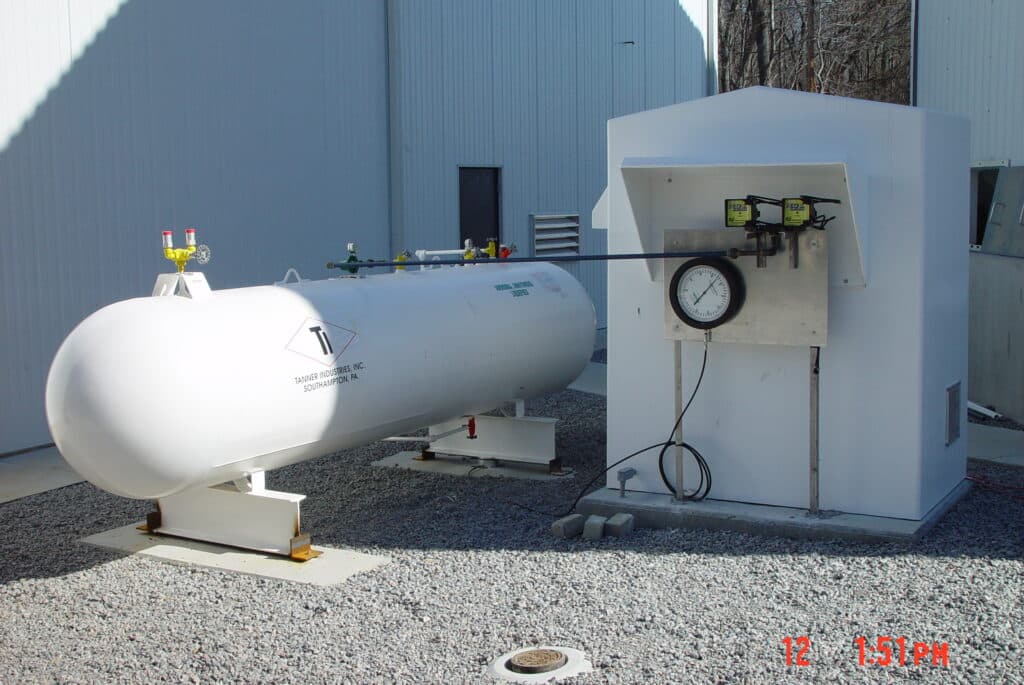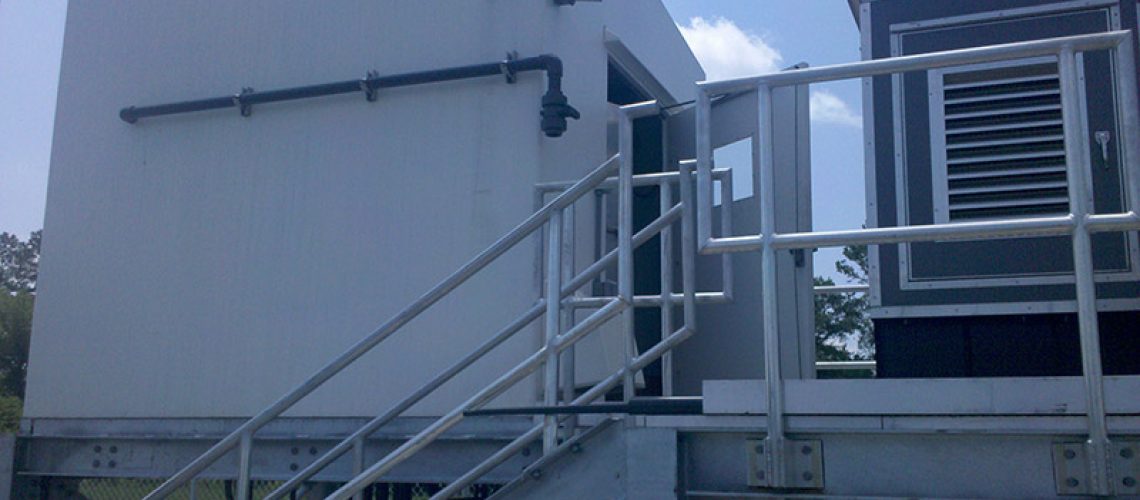Shelters are a necessity for the oil and gas industry when it comes to storing equipment. You’ll need to protect critical machinery as well, and a proper shelter can get the job done right. With so many options for shelters, however, you’ll need to understand exactly what kind of shelter you need to make sure you’re getting the most out of your investment.
Given the complexity of systems at work in the oil and gas industry, it’s essential that you opt for a shelter that’s adaptable and can be used with complicated systems. Pipe networks often have to be considered in the design and installation, so out-of-the-box solutions aren’t always an option. Fortunately, a proper provider can offer custom designs to fit your unique circumstances. Tracom’s experts excel at custom shelter designs and will work with you to find the perfect solution. Before you start, however, it’s important to understand exactly what kind of shelter will work best for your needs.
Why You Need a Fiberglass Shelter
The need for shelters in the oil and gas industry is abundantly clear when you consider all of the benefits that go along with these workplace enhancements. These shelters go far beyond general protection with uses that extend much further than you might initially think. Because of this, it’s easy to see why quality fiberglass shelters are such a worthwhile investment.
-
Equipment Protection
Whether you’re looking to protect tools or processing machinery, equipment protection is the central benefit of fiberglass equipment enclosures. Being left outside in the elements puts your equipment at risk of extreme weather or accidents. Even theft can be a problem with some parts of the oil and gas process. Additional protections can be added depending on the unique needs of your site.
-
Safe Storage
The oil and gas industry often calls for the safe storage of sensitive materials or chemicals. Even in perfect weather conditions, leaving these items out in the open can be hazardous. With a shelter, you can be confident that your items are stored safely. Plus, shelters are easily ventilated to ensure that the air is kept fresh inside, preventing the buildup of potentially toxic fumes.
-
Employee Shelter
In addition to keeping your items and equipment safe, shelters can be used to protect your employees as well. After all, they need protection from the elements just as much as your equipment does, and shelters can be built large enough for quite a few people to relax comfortably inside. Of course, ventilation is essential here as well.
What to Look for in an Oil and Gas Shelter
With a few requirements in mind, you’ll be in a better position to find the right kind of shelter for your needs. Never settle for anything less than something that meets all the necessary requirements to ensure that your equipment and processes are protected properly from elements like snow, rain, strong winds, extreme cold, and intense heat.
-
Longevity
A good shelter should function as an investment in addition to serving as protection. Because of this, you’ll need a shelter that can last even when met with the harshest weather and the inevitable burden of time. If a provider is truly confident in their shelters, you’ll find a generous warranty to go along with your purchase. Nothing solidifies confidence quite like being protected against the prospect of your business losing money.
-
Customizability
From oil and gas infrastructure to equipment sheds, every shelter will need to be fully customizable to ensure that it’s the best fit for your needs. This is why it’s helpful to work with a manufacturer rather than a reseller. A secondhand shelter is never going to fit your unique needs properly. A manufacturer, however, can take the specs of your site and create something uniquely suited to fit your exact needs.
-
Tamper Resistance
Tampering is always a threat at oil and gas facilities, so shelters will need to be properly equipped to resist any tampering attempts. It’s common for some oil and gas facilities to be unattended for long periods of time as they effectively run themselves, so having a secure shelter you can count on offers some much-needed peace of mind. Plus, preventing tampering helps you avoid costly repairs that could result if the system is compromised.

Why Choose Fiberglass for Your Oil & Gas Shelter?
Fiberglass is just one of many materials available for the construction of shelters, but it may be the best option. This is largely due to the variety of benefits you’ll only get from fiberglass construction. Take a look at some of fiberglass’s most alluring features that you won’t want to miss out on when it comes to your next shelter.
-
Damage Resistance
When you opt for fiberglass, the inherent durability of the material is only the beginning. Unlike metal materials, fiberglass won’t rust or corrode. This is especially helpful if you expect to deal with some more serious weather conditions. Also, the shelter can be placed near water without worry. This can save you quite a bit of time if the objects you need to protect are close to water already, as it eliminates the need to rearrange the worksite.
-
Lightweight
In addition to its rugged durability, fiberglass is remarkably lightweight. This makes installation much easier, especially if you opt for a prefabricated model. In fact, a prefabricated fiberglass shelter often doesn’t require any assembly at all. You simply have to drop it in place. The lightweight nature of fiberglass also comes in handy if you ever need to move the shelter for any reason.
-
Quiet
Oil and gas industry sites can be quite noisy, but that’s not a problem with fiberglass shelters. Fiberglass is particularly useful when it comes to shelters designed for employees, as it is inherently sound-absorbing. This allows employees to stay focused even if it’s relatively loud outside. With fiberglass, comfort is just as easy to achieve as safety.
Shelter Ventilation
Ventilating your shelter is an essential aspect of its installation and design. Fortunately, fiberglass shelters are easy to ventilate, especially if you plan for it from the beginning. Given that fiberglass shelters are crafted from a mold and are dimensionally exact, it’s easy to account for all the ventilation you may need. First, though, you’ll need to consider the kind of ventilation you want.
Ventilation Methods
You’ll find three primary ventilation methods available when it comes to a shelter. The first is active ventilation, which is the most common method used. With active ventilation, the shelter’s airflow is directed by an exhaust fan and an intake shutter. The fan is mounted near the ceiling and works to push hot air out of the shelter. Meanwhile, the intake shutter near the floor brings in cool air from outside. A control system for the vents is typically located outside the shelter.
Passive ventilation is another option, and it’s most often used in shelters that don’t have strong chemicals or susceptibility to overheating. A passive vent is one with manual shutters that let you control the natural flow of air. They don’t require a fan or any kind of power source. Simply open or close the shutters as needed. Because of these small requirements, they can be applied to any shelter.
Finally, you can opt for a hybrid ventilation system that works for shelters that wouldn’t be served properly by either an active or passive vent. With a hybrid vent, the wind is a power source rather than an electric fan, but it functions largely the same as an active ventilation system. These systems also have manual controls, much like passive vents, that let you determine exactly how much air is exhausted from the shelter.
Ventilation Types
Ventilation types are just as important to consider as ventilation methods. Only by achieving the correct type and method can you find the most efficient way to ventilate your shelter as needed. Fortunately, you’ll find quite a few different options available, so there’s always something that will work best for your unique shelter conditions.
Fixed vents are the most common types of ventilation vents in shelters, and they’re simply vents that are fixed in the upper walls of the shelter. They’re placed up high to let air travel through while preventing debris from getting inside. You can outfit these vents with rainproof guards and insect screens as needed for that extra bit of protection.
If the walls are used for piping or tools in your oil and gas application, you may need to opt for a door vent instead. As the name suggests, these vents are located on the doors rather than the walls. They’re typically placed at the bottom of the door, leaving the interior walls free to be used for other purposes like sign postage, tool storage, or just about anything else you can imagine.
Much like with ventilation methods, you can also employ a hybrid type of vent. The most common kind of hybrid vent is the solar vent. As long as your shelter gets sun for at least six or so hours a day, this may be the ideal choice. You don’t have to worry about any kind of external power source as long as you’re able to keep obstacles out of the way of the solar panel.
Adjustable vents are useful for shelters that need varied types of ventilation throughout their use, which is common in the oil and gas industry. Adjustable vents let you manually operate them using a tab, and these controls can be located on the inside, outside, or both sides. Adjustable shutters work the same way, albeit on a larger scale.
Working Without Ventilation
Some shelters in the natural gas industry won’t require ventilation at all. In these scenarios, you’ll need to take a different approach to finding the right kind of shelter. This is primarily applicable when it comes to the odorization process. To protect people, there are legal regulations requiring that natural gas producers odorize gas to make it noticeable.
When you’re implementing a shelter during the odorization process, it’s essential that none of the gas gets unnecessarily discharged into the atmosphere. This is where fiberglass shelters without vents can truly shine. Thanks to their rigid construction as a singular solid piece, you don’t have to worry about gas escaping through any seams. This is not only good for the bottom line, but it’s good for the overall environment too.
Shelter Upgrades
Even after you’ve found and installed the proper shelter, it’s never too late to opt for some additional upgrades. Extra accessories and features can truly take your shelter to the next level, increasing its functionality and ease of use for everyone involved. This goes far beyond ventilation systems, as shelters can be equipped with additional systems to enhance their efficiency.
One of the most common upgrades for shelters is lighting if you plan to do any work at night. Lighting in and around your shelter is easy enough to install and can be powered by the same source as your vents if you’re using a powered kind of ventilation setup. Motion-sensor lights are another form of protection against intruders who may be looking to tamper with your systems.
You may also be interested in an HVAC system for your shelter. While not applicable to all shelters, an HVAC system could be essential if you have to work in extreme heat or cold. This is primarily for the sake of workers within shelters, and keeping employees happy is the essential ingredient to any kind of successful workplace.
Fiberglass Shelters From Tracom
If you’re looking for a quality fiberglass shelter for the oil and gas industry, Tracom has got you covered. Our team of experts will work with you to create a custom design that meets your unique needs with a singular solid fiberglass structure that’s dimensionally exact and built to last. Contact our team today to get started on the path to offering your equipment and employees the necessary protection.



